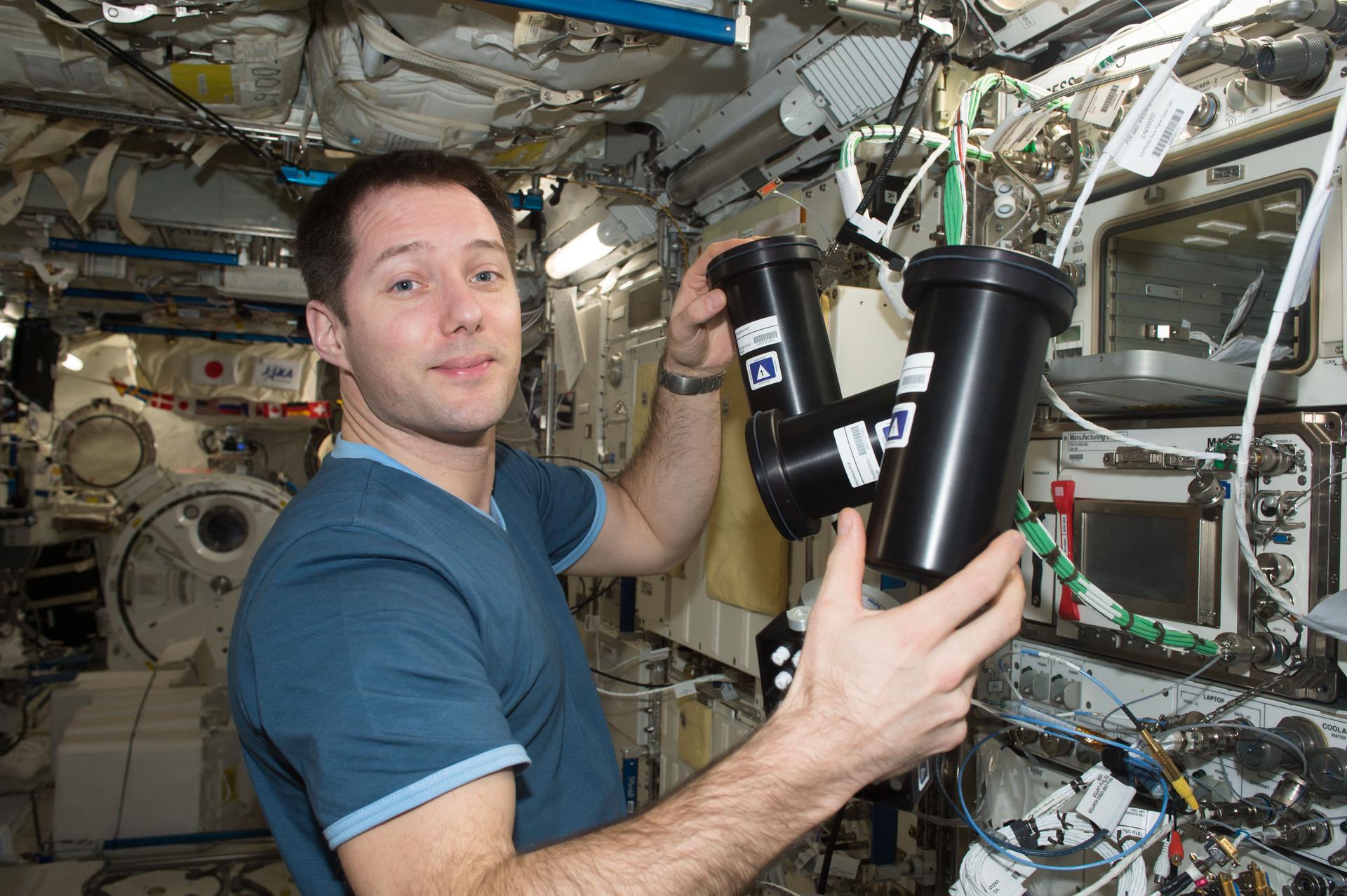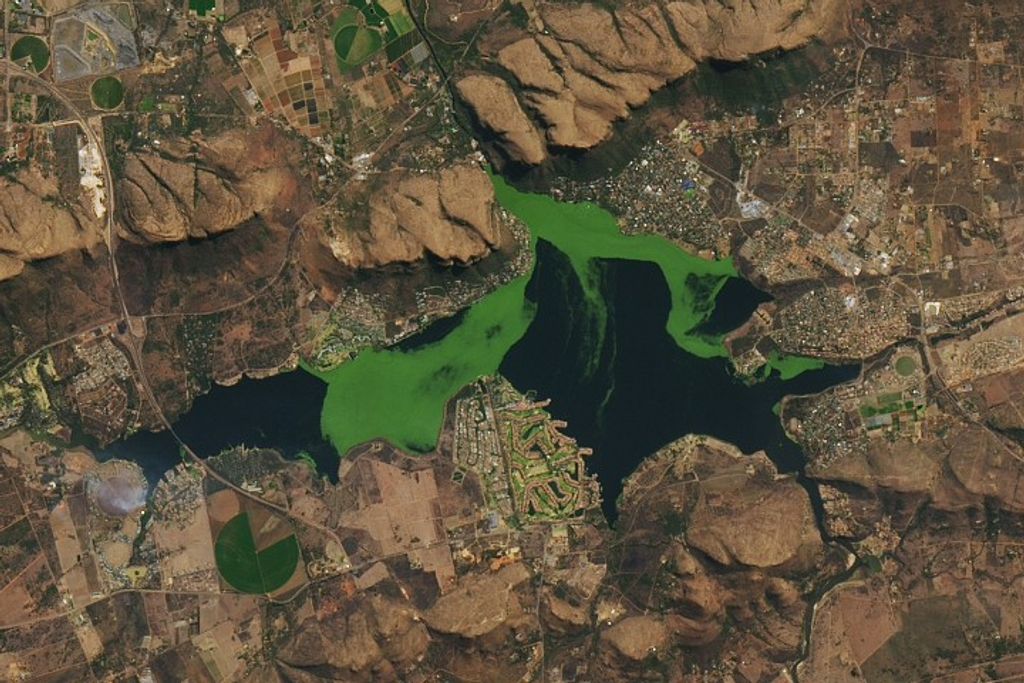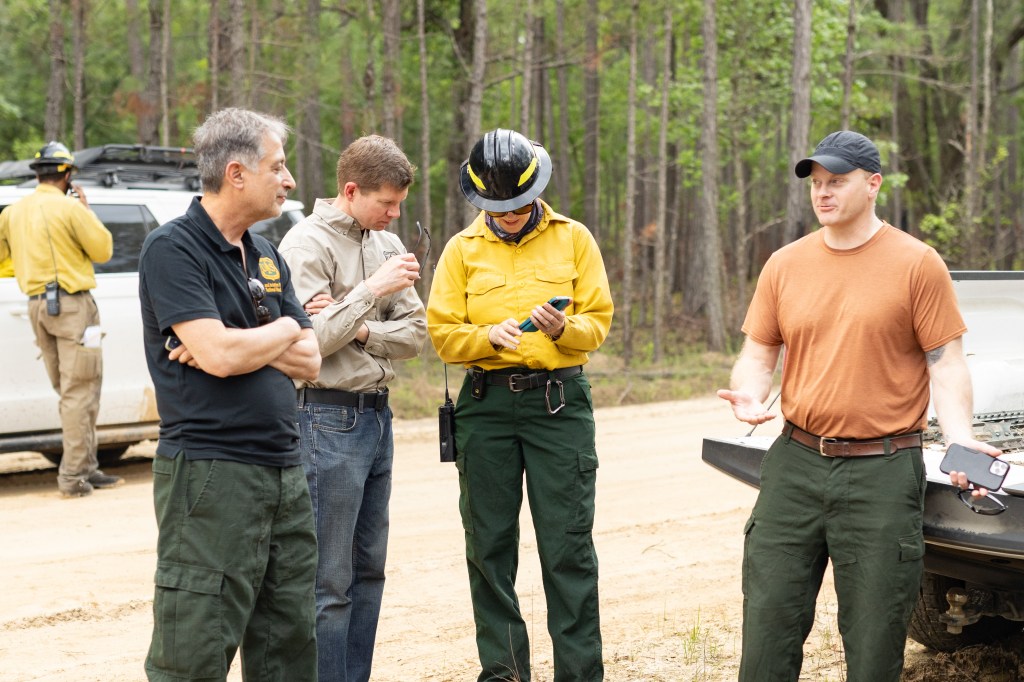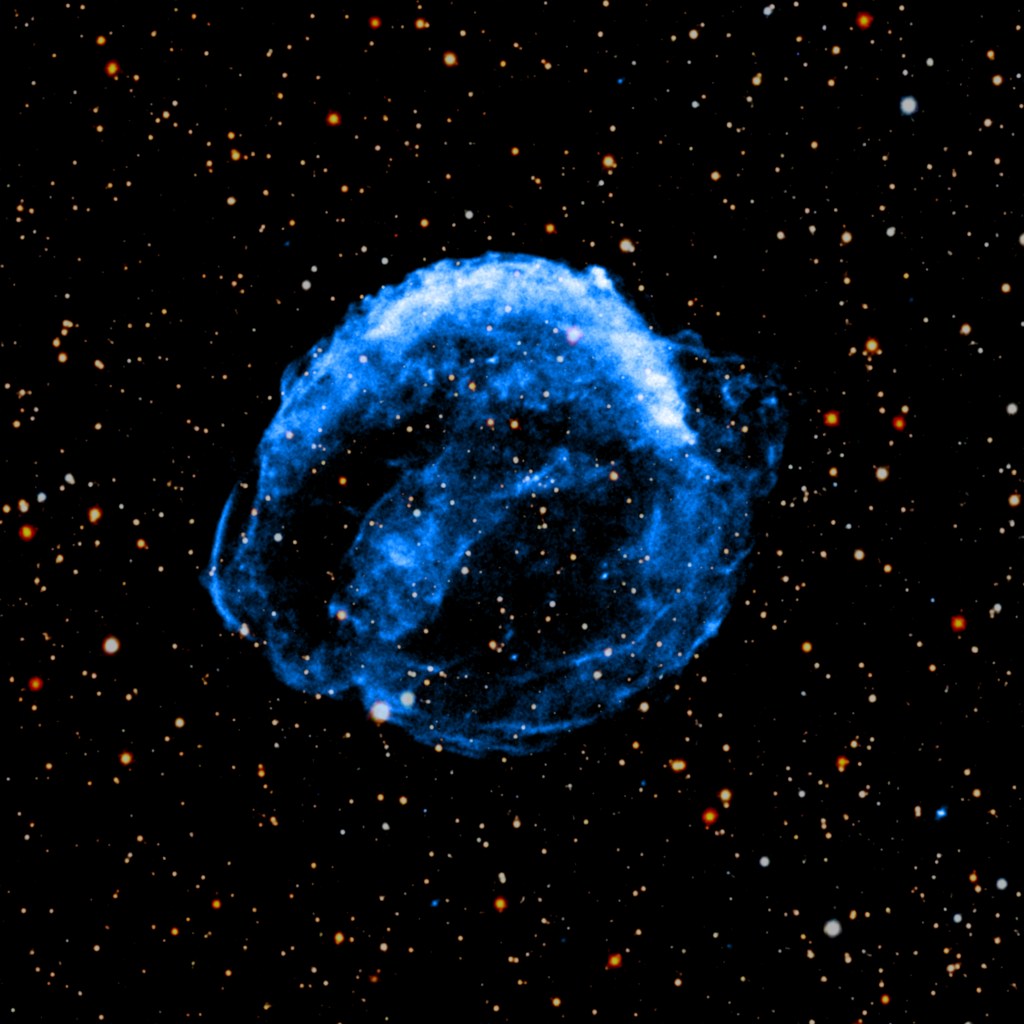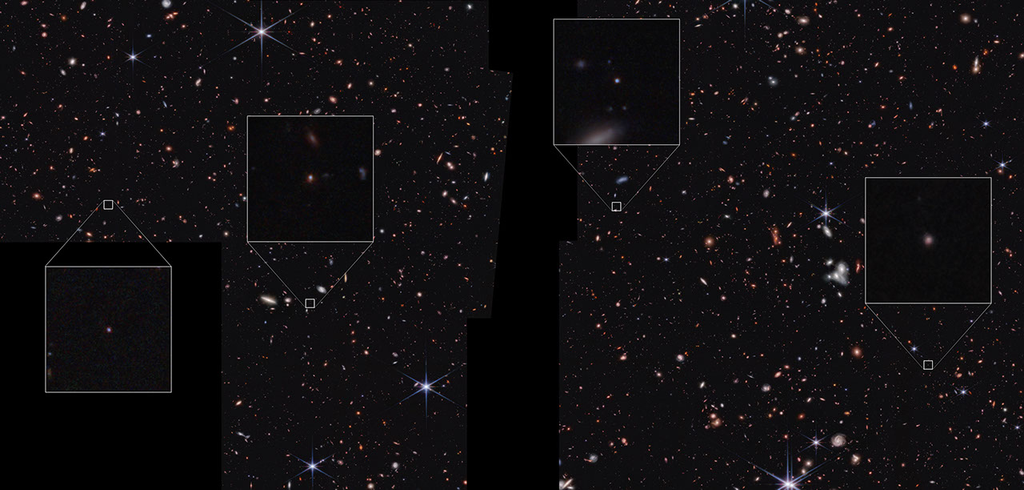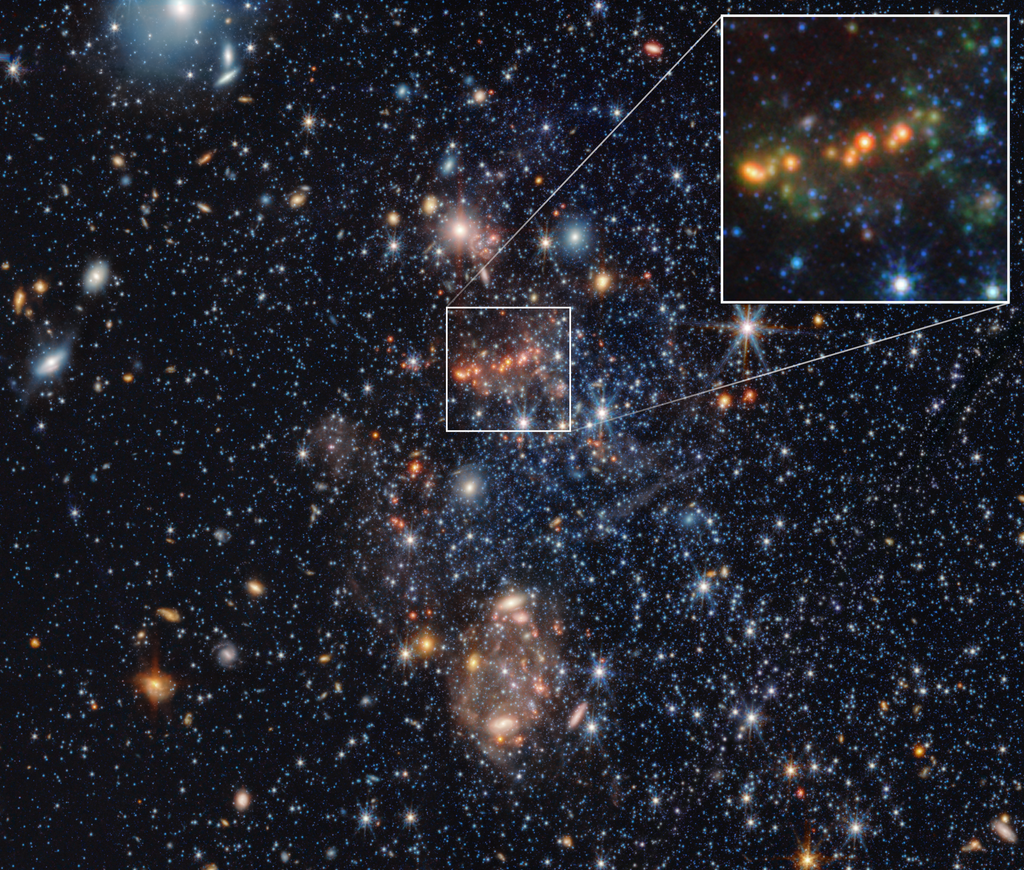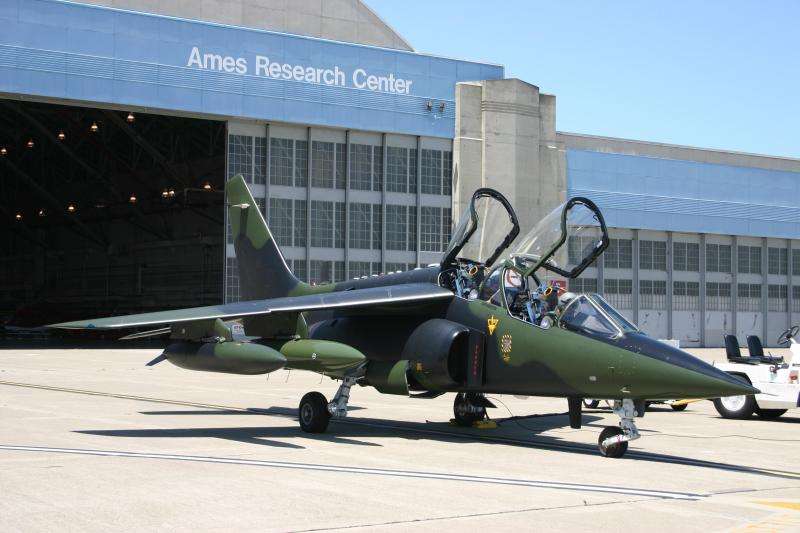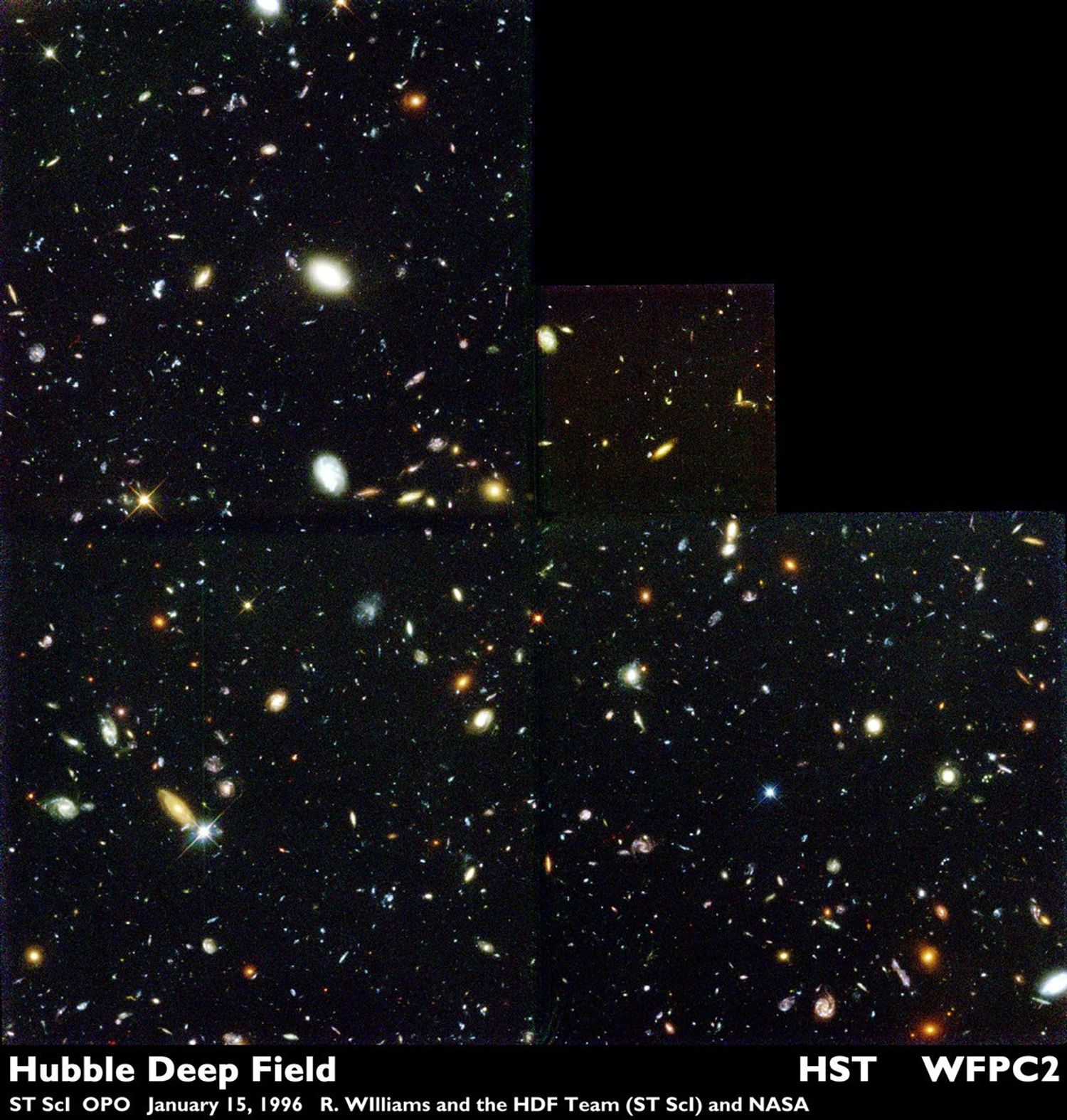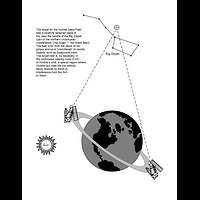One peek into a small part of the sky, one giant leap back in time...
Mankind's deepest, most detailed optical view of the universe - provided courtesy of NASA's Hubble Space Telescope - was unveiled today to eager scientists at the 187th meeting of the American Astronomical Society in San Antonio, Texas.
The image, called the Hubble Deep Field (HDF), was assembled from 342 separate exposures taken with the Wide Field and Planetary Camera 2 (WFPC2) for ten consecutive days between December 18 and 28, 1995.
Representing a narrow "keyhole" view stretching to the visible horizon of the universe, the HDF image covers a speck of the sky only about the width of a dime located 75 feet away. Though the field is a very small sample of the heavens, it is considered representative of the typical distribution of galaxies in space because the universe, statistically, looks largely the same in all directions. Gazing into this small field, Hubble uncovered a bewildering assortment of at least 1,500 galaxies at various stages of evolution.
Most of the galaxies are so faint (nearly 30th magnitude or about four-billion times fainter than can be seen by the human eye) they have never before been seen by even the largest telescopes. Some fraction of the galaxies in this menagerie probably date back to nearly the beginning of the universe.
"The variety of galaxies we see is amazing. In time these Hubble data could turn out to be the double helix of galaxy formation. We are clearly seeing some of the galaxies as they were more than ten billion years ago, in the process of formation," said Robert Williams, Director of the Space Telescope Science Institute Baltimore, Maryland. "As the images have come up on our screens, we have not been able to keep from wondering if we might somehow be seeing our own origins in all of this. The past ten days have been an unbelievable experience."
Harry Ferguson, one of the HDF team astronomers added: "One of the great legacies of the Hubble Telescope will be these deep images of the sky showing galaxies to the faintest possible limits with the greatest possible clarity from here out to the very horizon of the universe."
The term "deep" in an astronomical sense means looking at the faintest objects in the universe. Because the most distant objects are also among the dimmest, the image is the equivalent of using a "time machine" to look into the past to witness the early formation of galaxies, perhaps less than one billion years after the universe's birth in the Big Bang.
The image data are so important (the astronomical equivalent of the Dead Sea Scrolls, one scientist quipped) they are being made available immediately to astronomers around the world to pursue research on the formation of galaxies and for probing basic questions about the structure and evolution of the universe.
Though months of detailed research and analysis lie ahead, HDF team astronomers believe they see evidence for a significant population of galaxies that existed when the universe was less than a billion years old.
The landmark research was carried out under Williams' direction, and using a significant fraction of his own director's discretionary time on the Space Telescope. He decided to conduct the Hubble Deep Field program to use Space Telescope's exquisite resolution and high sensitivity to push back the very limits of time and space.
Williams, and the ST ScI team he assembled to conduct the observations, hopes it will unlock clues to fundamental cosmological questions: Will the universe expand forever? How long ago did the first galaxies appear? How have galaxies evolved over the life history of the universe?
Essentially a narrow, deep "core sample" of sky, the HDF is analogous to a geologic core sample of the Earth's crust. Just as a terrestrial core sample is a history of events which took place as Earth's surface evolved, the HDF image contains information about the universe at many different stages in time. Unlike a geologic sample though, it is not clear what galaxies are nearby and therefore old, and what fraction are very distant and therefore existed when the universe was newborn. "It's like looking down a long tube and seeing all the galaxies along that line of sight. They're all stacked up against one another in this picture and the challenge now is to disentangle them," said Mark Dickinson of the HDF team.
Planning to "Dip Deep into the Dipper"
Nearly a year of preparation preceded the observation. The HDF team selected a piece of sky near the handle of the Big Dipper (part of the northern circumpolar constellation Ursa Major, the Great Bear). The field is far from the plane of our Galaxy and so is "uncluttered" of nearby objects, such as foreground stars. The field provides a "peephole" out of the galaxy that allows for a clear view all the way to the horizon of the universe.
Test exposures made in early 1995 with Hubble and the 4-meter telescope at Kitt Peak National Observatory also confirmed the field is devoid of large galaxy clusters, which would interfere with seeing farther and fainter objects. The target field is, by necessity, in the continuous viewing zone (CVZ) of Hubble's orbit, a special region where Hubble can view the sky without being blocked by Earth or interference from the Sun or Moon.
Staring at one spot in the sky for ten days, Hubble kept taking pictures one after another for the entire exposure time, accumulating data. Each exposure was typically 15 to 40 minutes long. Separate images were taken in ultraviolet, blue, red, and infrared light. By combining these separate images into a single color picture, astronomers will be able to infer - at least statistically - the distances, ages, and composition of the galaxies in the HDF image.
Astronomers at ST ScI processed the frames, removing cosmic rays and other artifacts, and put them together into one final picture. Each time they add a picture, the view got deeper, revealing fainter objects. When they were done they had the deepest picture ever taken of the heavens.
Follow-up observations will be conducted by a variety of ground and space-base telescopes at other wavelengths of the electromagnetic spectrum, from X-ray through radio. An infrared camera scheduled to be installed in Hubble during the 1997 Servicing Mission will likely image the field to search for even farther primeval galaxies, whose light has been shifted to the infrared region of the spectrum by the expansion of the universe.
Background Information: "Seeking our Cosmic Roots" – The Hubble Deep Field Project
A key scientific justification for building Hubble Space Telescope was to use it to measure the size and age of the universe, test theories about its origin in the Big Bang, an the emergence of large-scale structure as embodied in vast filaments of galaxies. We live within a universe that is expanding and evolving. Images of distant galaxies offer "fossil" clues to what the universe looked like when it was only a small fraction of its present age. Understanding galaxy evolution is a prerequisite to addressing even more fundamental questions about the expansion of space and ultimate fate of the universe.
The Hubble Deep Field project was inspired by some of the first deep images to return from the telescope after the 1993 HST servicing mission. These images showed that the early universe contained galaxies in a bewildering variety of shapes and also sizes. Some had the familiar elliptical and spiral shapes seen among normal galaxies, but there were many peculiar shapes not commonly seen in the local universe. Such images of the early universe are likely to be one of the enduring legacies of the Hubble Space Telescope. Few astronomers had expected to see this activity presented in such amazing detail.
The Decision
Impressed by the results of earlier observations such as the Hubble Medium Deep Survey, a special advisory committee convened by Robert Williams, Director of the Space Telescope Science Institute (STScI), recommended that he use a significant fraction of his annual director's discretionary time to take the deepest picture of the universe, by aiming Hubble for 150 consecutive orbits on a single piece of sky. The research is being done as a service to the entire astronomical community. Images from the Hubble Deep Field project will be made available to the astronomers around the world shortly after completion of the observation.
The Scientific Context
Like climbing the tallest mountain, taking the deepest image has been the goal for every telescope that has pushed the frontiers of light gathering power, resolution, or spectral range. When the great 200-inch Hale telescope on Mount Palomar came into operation 50 years ago, astronomers hoped to use such observations to provide direct observational evidence for verifying or disproving the prevailing view that the universe is expanding and that space is "curved" by gravity, as predicted by Einstein's theory of general relativity. Just as Earth's curvature can be proven by carefully measuring lengths and angles on its surface, it should be possible to verify that the universe is curved by careful measurement of the brightness and sizes of galaxies. For example, if galaxies were all of the same size, and were distributed uniformly through space, then it would be possible to measure the curvature of space simply by measuring the apparent sizes and comparing the number of big, nearby galaxies to the number of smaller, distant ones.
By the early 1960's, such measurements appeared to be well within reach of ground-based telescopes. However, it became apparent that these tests are not as straightforward as envisioned. Because the light that reaches us now from distant galaxies left billions of years ago, we are viewing them at a time when they were younger. To carry out geometrical tests for the curvature of the universe, it is essential to correct for the changing appearance of galaxies as they grow old. A central problem is that the simplest ideas for galaxy evolution are based on observations of nearby galaxies, their apparent sizes, and their distribution in space. This means that a view of young galaxies is missing from fundamental models of galaxy evolution, or from the current picture of the universe itself.
Observations in the 70's and 80's showed the universe is not as simple as first presumed. Galaxies are not randomly distributed on the sky, but form great clusters, walls, and sheets. This made astronomers and physicists realize that seeing how large-scale structures formed and developed provides a key to the universe's origin.
The universe's large-scale structure may be the imprint of much smaller- scale, or quantum, processes that acted shortly after the Big Bang, when the universe was just a soup of subatomic particles. Much later in the universe's history, structure was primarily governed by gravity. In this view, the gravitational attraction was largely between clouds of "dark matter" – subatomic particles that make up most of the mass of the universe. The galaxies formed at the densest concentrations of dark matter, like froth on the crests of waves in the ocean.
The basic picture is that the universe formed in the Big Bang and that structure grew from primordial quantum fluctuations. However, astrophysicists have many theoretical variations on this theme. For example, different forms of dark matter predict a different character of the waves and ripples of the early universe. Other theories do not involve the Big Bang or quantum fluctuations.
To be considered successful, cosmological theories must explain the distribution of sizes, shapes, colors and locations of galaxies in both the nearby universe and at large distances. The Hubble Deep Field and other Hubble observations will allow astronomers to compile accurate catalogs of the sizes, shapes, colors and distances of very faint galaxies. With these observations, astronomers aim to provide a solid testing ground for competing "world models."
The Hubble Deep Field will Probe Key Astronomical Questions: How Many Galaxies are there in the Universe?
The Hubble Deep Field will be used to count galaxies ten times as faint as the deepest existing ground-based observations and nearly twice as faint as the deepest existing Hubble images. Beyond the limits of detection of individual galaxies, astronomers will study the background level in the images to try to deduce how much extra light there is in unseen galaxies. By observing through four different color filters, the Hubble Deep Field provides a unique way to distinguish very distant galaxies from nearby galaxies. Hydrogen both within the distant galaxies, and in intergalactic space, absorbs some of the ultraviolet light from the very distant galaxies. The cumulative effect of the absorption is to make these galaxies essentially vanish in the ultraviolet. This technique of looking for "ultraviolet dropout" galaxies has been successfully used with ground-based telescopes over the last several months, but will be a new experiment for Hubble because it requires a larger investment of observing time than is normally allocated to an individual observer.
How Did Large-Scale Structure Evolve In The Universe?
The Hubble Deep Field will be used to perform a statistical study of the distribution of galaxies on the sky. This is an essential test of models for the structure of the universe and galaxy formation theories. Predicting how clustering should vary with brightness (or other galaxy properties) is a key challenge to models of structure formation. Current observations show that galaxies tend to cluster around other galaxies. However, the faintest galaxies are almost randomly distributed on the sky. The Hubble Deep Field will push such studies to fainter limits.
How Were Galaxies Assembled?
Detailed studies of the ages and chemical compositions of stars in our own galaxy suggest that it has led a relatively quiet existence, forming stars at a rate of a few suns a year for the last 10 billion years. Other spiral galaxies seem to have similar histories. If this is typical evolution for spiral galaxies, then predictions can be made for what they should have looked like at half their present age – including their size, color and abundance. This information, combined with actual distances derived from ground-based spectroscopic observations, will provide a new test for theories of spiral galaxies.
The other major class of galaxies seen in the nearby universe is the elliptical, football-shaped aggregates of stars that appear to be very old and stopped forming stars long ago. There is currently much debate about when such galaxies formed and whether they formed through collisions of other types of galaxies or through collapse of a pristine cloud of primordial gas in the very early universe. The Hubble Deep Field, along with other deep Hubble images, provides a snapshot through time, which can be used to search for distant elliptical galaxies, or primeval galaxies that might later evolve into elliptical galaxies.
Is The Universe Open Or Closed?
An open universe expands forever because it does not contain enough matter (also called mass density). Space is said to be negatively curved, as first described by Einstein in his law of general relativity. A closed universe eventually stops expanding and then contracts, to ultimately collapse into a black hole. In such a universe space is described as positively curved – the universe folds back in on itself and space is unbounded but finite. The distribution of galaxies in the Hubble Deep Field images may yield clues to the curvature of space. The Hubble Deep Field results will be compared to models that predict how the universe should look if it is open or closed. If certain classes of galaxies can be identified where uncertainties in evolution are small, then the sizes, brightnesses and numbers of faint examples of these galaxies can be compared to the local properties to estimate the cosmological curvature.





